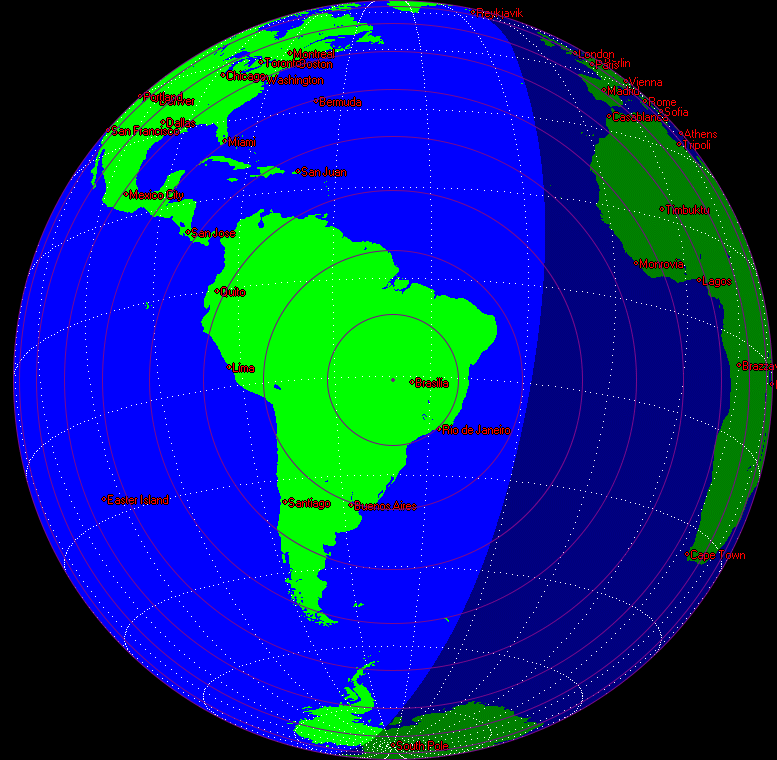252P-ids 2022: prediction of activity
to the list of predictions

Fig. 1. Space-temporal projection of 45P-ids trails parts onto their minimal distance passages in 2022 (correspondence between colours of the particles and their ejection velocities can be seen here).

Fig. 2. Detailed space-temporal projection of 45P-ids trails parts onto their minimal distance passages around the time of possible activity from the 1989 trail.
On the 31 March at 19:55 UT the Earth is expected to encounnter the young trail of the comet 252P/LINEAR ejected in 1989. The parameters of encounter are following: minimum distance is 0.00107 AU, ejection velocity is 62.44 m/s, trail density is 494.3% of that for 1 rev. Leonid trail. So far computed density of the trail is quite high while the distance between the trail and the Earth around the given time will be not very large. However the ejection velocity of particles is very high which means the Earth encounters the trail part with very small particles. Considering small size of the parent comet a weak visual activity with faint meteors is expected at best, perhaps with higher activity of radio meteors. Anyways the observations are recommended to check what happens.

Fig. 3. The Earth as seen from coming 252P-ids meteors (RA=77.2°, Dec=-15.5°) during the expected maximum time of outburst from 1989 trail at 19:55 UT 31 March.
If the expected activity occurs at the expected time it should be visible very vell mainly from the western part of Africa. Radioobvervations in the daytime are also possble in South and Central America as well as in the south-east of Northern America. The Moon will be around new phase and won't create any problems for observations.
References
1. "Comet's dust 2.0" program by S. Shanov and S. Dubrovsky. [Used for orbital computations.]
2. Lyytinen E, van Flandern T. "Predicting the strength of Leonid outbursts", 2000, Icarus, P. 158-160.
3. Jenniskens P. Meteor showers and their parent comets, 2006, 780 p. 4. Kasuo Kinoshita, http://jcometobs.web.fc2.com/ [Orbital elements of the comet 8P Tuttle]
5. Hewgill G. Xearth 1.1.0 (Software program), 2003. 6. Molau S. Results of the IMO Video Meteor Network – December 2014. http://www.imonet.org/reports/201412.pdf 7. 2016 Meteor Shower Calendar, http://imo.net/files/data/calendar/cal2016.pdf
References
1. "Comet's dust 2.0" program by S. Shanov and S. Dubrovsky. [Used for orbital computations.]
2. Lyytinen E, van Flandern T. "Predicting the strength of Leonid outbursts", 2000, Icarus, P. 158-160.
3. Jenniskens P. Meteor showers and their parent comets, 2006, 780 p. 4. Kasuo Kinoshita, http://jcometobs.web.fc2.com/ [Orbital elements of the comet 8P Tuttle]
5. Hewgill G. Xearth 1.1.0 (Software program), 2003. 6. Molau S. Results of the IMO Video Meteor Network – December 2014. http://www.imonet.org/reports/201412.pdf 7. 2016 Meteor Shower Calendar, http://imo.net/files/data/calendar/cal2016.pdf